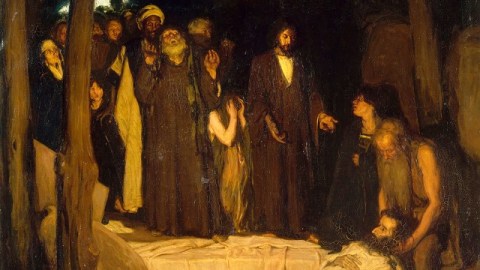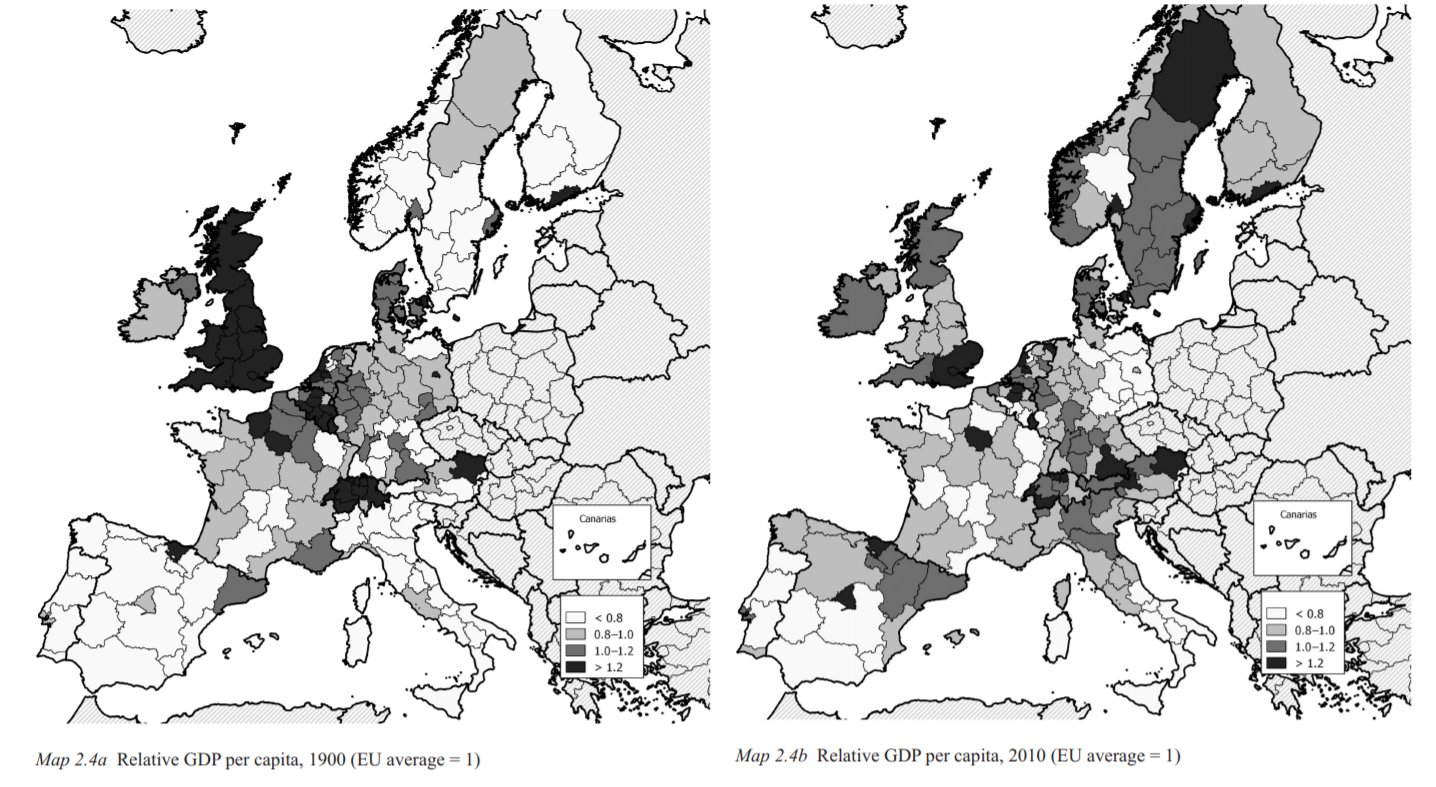Resurrecting the Father of African-American Art

While walking in Fairmount Park in 1872 with his minister father, 12-year-old Henry Ossawa Tanner saw a man painting and became curious about art. His family fed that curiosity, which led Tanner to study painting at the Pennsylvania Academy of the Fine Arts (PAFA), continue his studies in Paris, ultimately build an international reputation as an important religious painter, and use his status to mentor and support young artists for decades—all remarkable achievements, but even more remarkable for an African-American in the late 19th century. In Henry Ossawa Tanner: Modern Spirit, at the PAFA through April 15, 2012, curator Anna O. Marley and her fellow researchers seek to resurrect this forgotten father of African-American art from the tomb of obscurity built over the nearly eight decades since his death. But just as Tanner himself shunned the title in life, the exhibition and catalog invite the idea while simultaneously showing him as an artist that transcended all labels, especially those of race.
The first room of the exhibition begins with the foundation of Tanner’s art—his family. A portrait bust of his father (a distinguished a minister in the African Methodist Episcopal Church) and a oil portrait modeled on Whistler’s Mother of his mother (a former slave) pay homage to the roots of Henry’s faith and fortitude. A portrait of Henry by his teacher Thomas Eakins and a painting now owned by Henry’s grand-nephew represent his extended family then and now. Eakins accepted Tanner despite the racial attitudes of the time and challenged him to develop his gifts. One of Eakins’ assignments for Tanner was to go to the Philadelphia Zoo and paint the animals there, which led to the early work Pomp at the Zoo, starring the lion known as “Pompeii” or “Pomp.” “[T]he thing… that always impressed me is that it’s not just a lion,” Lewis Tanner Moore, the painting’s owner and Henry’s descendant, remarks, “ It’s very clearly written on the plaque ‘African Lion.’” Refusing to be caged in by racism, Tanner roared with the ferociousness of a lion through the power in his painting.
The fact that most people who know anything about Tanner know him through his depictions of African-American life in The Banjo Lesson and The Thankful Poor is a great misrepresentation of who he was as an artist. Yes, Tanner painted those works to counter racist depictions of African-Americans and as part of his own fascination with the dynamics of learning and mentorship, but the Tanner known in his day (and who will now be known in our own, thanks to this exhibition) was the painter of deeply felt and magnificently rendered religious scenes.
Tanner’s The Resurrection of Lazarus (shown above, from 1896) launched Henry’s career as an international figure. Lazarus earned a third-class medal in the Paris Salon of 1897 and was soon purchased by the French state, setting off a firestorm of media attention in Europe and America. The department store magnate Rodman Wanamaker fell in love with the painting and offered Tanner his patronage, which cemented Henry’s success and allowed him to travel and broaden his cultural and artistic horizons. The painting, which appears in America for the first time in this exhibition, depicts the Bible story of Jesus raising his friend Lazarus from the dead. Lazarus and his shroud stretching across the foreground of the work and Jesus summoning him to life draw the eye initially, and rightfully so. But closer inspection reveals the Tanner’s ability to register different expressions of awe on the faces of the witnesses that occupy the majority of the canvas. “Hidden” in plain sight, a dark-skinned African figure stands among the crowd, perhaps to suggest the African presence in Christianity, as the catalog suggests, one that Tanner knew first hand from his religious upbringing and also knew was cruelly underestimated.
The Resurrection of Lazarus and similar works, such as The Annunciation, in which the Virgin Mary sits before a shaft of light representing the Angel Gabriel, show how Tanner merged the realism he learned from Eakins with the religious teachings of his youth into a winning and profitable combination in the late 19th century when religious art dominated the market. A series of works in which Tanner modeled the Virgin Mary and young Jesus on his white wife Jessie and son Jesse, respectively, show how Henry continued the family affair of art and faith with his own family. When Wanamaker’s generosity allowed Tanner to travel to the Holy Land and to Northern Africa, Henry introduced an Orientalist feel to his works, both those with and without religious content. Around the same time, Tanner incorporated Impressionist touches to his art, and even enhanced the mystical mystery through Whistler-esque, blue-tinged nocturnes. Even the materials of painting became a laboratory for Tanner, as he began to experiment with combining tempera and oil to achieve new textures and effects, which are wonderful to behold but a conservator’s nightmare, as an essay on Tanner’s techniques attests.
But perhaps Tanner’s greatest innovation came in his handling of the religious subject itself. Using a “strategy of narrative suggestion,” Robert Cozzolino explains in the catalog, Tanner moves away from the dramatic moment itself, as in The Resurrection of Lazarus, to the moments before and after the moment—dejected figures walking away from the Crucifixion, stunned figures seeing the open tomb on Easter morning. Denied a view of the miraculous event itself, we must take it second hand from Tanner’s witnesses. Tanner “demands that viewers examine their own spirituality and the challenges of belief,” Cozzolino continues. In 1924, Tanner explained that the goal of his religious works was “to not only put the Biblical incident in the original setting, but at the same time give the human touch ‘which makes the whole kin’ and which ever remains the same.” Through this “narrative suggestion,” Tanner presents the total experience of faith—from agonizing doubt to joyous acceptance—independently of time and space.
It is this transcendence and human touch that truly make Tanner the “Modern Spirit” of the exhibition’s title. Tanner took his critical and monetary success and used it to mentor young African-American artists seeking to follow his path in Paris—giving them everything from small loans to appraisals of their work to advice on finding an apartment. Artists such as William H. Johnson and Hale Woodruff owe at least some of their success to Tanner’s guidance. (The PAFA extends the Tanner exhibition with After Tanner: African American Artists Since 1940, which shows not only how Tanner influenced artists directly, but also how his influence ripples through time to inspire Romare Bearden, Faith Ringgold, and others up to today.) As Richard J. Powell puts it in his catalog essay, “A major component of the Henry Ossawa Tanner mystique had to do with his playing a major role in the African American artist’s dream of not just critical praise or institutional affirmation but of geopolitical, racial, and worldly transcendence.” Just as Tanner’s religious paintings defy space and time in a universal “human touch,” Tanner’s touching of the lives of the artists who followed him compelled them not to segregate their talent as simply “African-American” but to transcend every label, beginning with that of race.
When the artists of the Harlem Renaissance beckoned to Tanner to return to 1920s America and be their leader, Henry respectfully declined. Alan C. Braddock, continuing his fascinating work on the “modernity” of late 19th century American artists he began in his Thomas Eakins and the Cultures of Modernity (my review here), sees Tanner’s work as the “beginning of the end of race” in his catalog essay. Beginning with Tanner’s own mixes racial identity (he was part English and very light skinned), Braddock sees Tanner exploring the idea of race as a purely human construct rather than a scientific fact—a very modern approach. “Tanner’s Christian cosmopolitanism” in racially tolerant Europe helped him produce a “postracial vision.” When we look at the face of Jesus in Tanner’s Nicodemus, are we looking at a black or white Jesus? Ultimately, Braddock believes, it doesn’t matter in Tanner’s eyes, and it shouldn’t in yours either. “Only after embracing God and experiencing true spiritual rebirth may the beholder perceive Christ in his plentitude, the precise nature of which Tanner strategically left unclear,” Braddock argues. “Until then, the viewer faces a beckoning enigma.” True Christianity is true acceptance, true color blindness. Forcing labels on Tanner, including laudatory ones such as “father of African-American art,” merely recommits the sins of the past in the same way that “Black History Month” intimates that it’s a different kind of history than that of the other eleven months. “In addition to critiquing the racial thinking of his time,” Braddock concludes, “Tanner challenges us to dispense with such thinking once and for all.”
Tanner’s middle name “Ossawa” comes from the tiny Kansas town of Osawatomie, where abolitionist John Brown staged a raid three years before Henry was born. Like the African man “hidden in plain sight” in The Resurrection of Lazarus, the radical and revolutionary “hides” in plain sight in Henry Ossawa Tanner’s very name. As Henry Ossawa Tanner: Modern Spiritand its remarkably broad and enlightening catalog demonstrate, labeling or confining Tanner is as impossible now as it was when he was alive. Tanner resists our categories because his faith won’t allow us to. His enduring soul—his modern spirit—won’t allow our souls to commit the sin of dehumanization even with the best intentions. Henry’s son Jesse years later explained the power of the image of “the Good Shepherd” (a subject he painted 15 times) in his father’s imagination. Viewers of Henry Ossawa Tanner: Modern Spirit will be shepherded towards a whole new appreciation not only of this great artist, but also of how we view difference itself.
[Image:Henry Ossawa Tanner (1859-1937). The Resurrection of Lazarus, 1896. Oil on canvas, 37 x 48 in. Musée d’Orsay, Paris, France, Inv. RF1980-173. Photo: Hervé Lewandoswki © Réunion des Musées Nationaux/Art Resource, NY.]
[Many thanks to the Pennsylvania Academy of the Fine Arts for providing me with the image above from, a press pass to view, and other press materials related to the exhibition Henry Ossawa Tanner: Modern Spirit, which runs through April 15, 2012. Many thanks to the University of California Press for providing me with a review copy of the catalog to the exhibition.]





